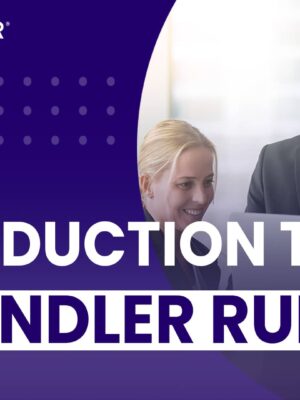Grow the Sales Division – By Improving Your Talent Pipeline

Quick quiz for sales leaders: Over the past three working days, how many total hours did you devote to expanding your pipeline of qualified sales applicants?
If you’re like most of the leaders we talk to, the answer was either a small number, an embarrassed silence, or both.
Deepening the talent bench by attracting qualified job applicants is, as a practical matter, not a critical priority for most of today’s sales leaders. That’s a problem, because by overlooking talent acquisition, and focusing instead on short-term problems (like revenue shortfalls and deals you need to help team members rescue in order to make your target), you are basically ensuring that those same short-term problems keep landing on your doorstep.
The most effective sales leaders focus on keeping their talent pipeline full. In fact, they take that just as seriously as they expect the members of their sales team to take keeping the opportunity pipeline full. Salespeople who ‘hug their pipeline’, are afraid to ask tough questions, or have ‘happy ears’ are often the ones without a robust pipeline. They don’t want to disqualify because they are hoping and praying that one or two deals they think “look good” will close. Similarly, many sales leaders mistakenly hold on to poor applicants and poor performers way too long, because of the same kind of thinking. Having a robust pipeline of truly great candidates has a profound impact on the manager’s mindset … and on the willingness to ‘disqualify’ people who are wrong for the team and the organization.
In reality, the only effective leadership strategy here is one that incorporates talent acquisition and retention. Here are four best practices that we have noticed that the most successful sales leaders observe in this area–best practices that leaders of underperforming teams tend to neglect, minimize, or overlook.
- Create, or update, your formal candidate profile for each position you are likely to want to fill over the next twelve months. Don’t wait until there is an empty slot to fill. Do this now. If you haven’t yet taken the time to create a candidate profile – a summary of the traits and attitudes that you see in the top performers that you would hate to lose – take the time to draft this document immediately. De-emphasize specific skills or the number of years of experience in a given field that you are looking for; these are relevant, but if you make them your primary criteria, you’ll be fishing out of the same pond that everyone else is. Focus instead on personal traits (like accountability and tenacity and transparency) and on cultural fit with your organization. Once you have a clear sense of who you’re looking for …
- Create a pipeline tracker. Add a certain number of interviews per month to your cookbook (personal behavioral plan); set up a spreadsheet or table that allows you to track likely possible candidates as they move through the process from initial contact to hired. Identify the right number of people who should be in this pipeline at all times. Then … network and keep your pipeline full! Check in on your totals monthly or weekly. You expect the members of your sales team to do this with sales prospects, right? Why on earth wouldn’t you expect the same thing of yourself when it comes to prospective sales hires? And why wouldn’t you want to have four or five good leads to call in for an interview when the need arises?
- Do this yourself. Don’t offload the talent acquisition responsibility to HR. Certainly you can enlist their help … but remember, they won’t be judged by the performance of the people you hire. You will. Make this your process, and make sure everyone you even consider hiring matches the personal traits and cultural values of your best performers. Focus on those traits when you interview for specific behaviors in the applicant’s job history.
- Steer clear of entitlement. One of the best ways to lose talented salespeople is to set up a two-tiered system under which some people must play by the rules … and others don’t. Your recruitment process and sales hiring practices should screen out candidates who believe the team comes second. During phone or in-person interviews, eliminate from consideration any applicants who make it clear they expect to receive special treatment for hitting their revenue targets. One great way to do this is to ask the applicant to share an example of a time when he or she was treated unfairly by management. If the person shares a long list of grievances, and expects you to sympathize, that’s a pretty good indicator that you’re looking at someone with entitlement issues. Tactfully disqualify their candidacy.
Too many sales leaders have gone cold on talent development. Adopt the mindset that hiring a great employee is like closing a million-dollar deal. It is! Follow the four simple behavior steps above, and you’ll keep your applicant pipeline filled with qualified employment leads … and put an end to the rushed cycle of “emergency hiring” that only focuses on talent acquisition when there is a vacancy that must be filled. That cycle, all too often, creates just as many problems as it solves.
Read this blog post to learn more about building a successful sales division.








